CMB Simulations at Scale
Using a KNL-optimized version of the TOAST framework running on 600,000 cores of NERSC's Cori-2 supercomputer to simulate and map the sky signal, instrument noise, and atmosphere, observed by 50,000 detectors spread over 7 frequencies, scanning 20% of the sky from the Chajnantor Plateau in Chile for 1 year.
Looking through an example of one 20-minute simulated atmosphere volume, with the wind blowing from top right to bottom left:
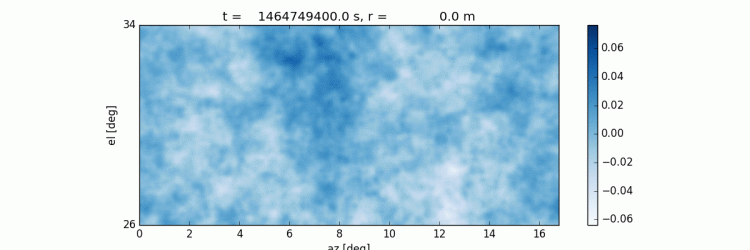
Filtered and binned maps of the cumulative sky temperature and polarization at each frequency over 1 year of observing (129 observing days each with a 13-hour constant elevation scan of the ACTpol SS sky patch).
| Frequency | Temperature (T) | Polarization (P) |
| 20 GHz |  |
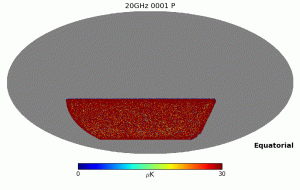 |
| 30 GHz | 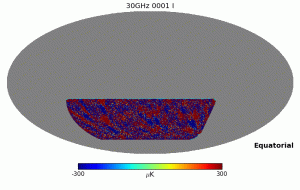 |
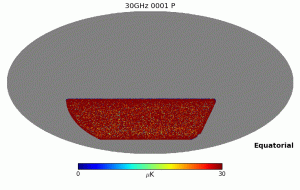 |
| 40 GHz | 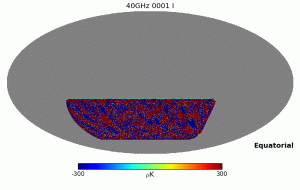 |
 |
| 95 GHz |  |
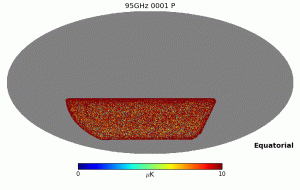 |
| 150 GHz |  |
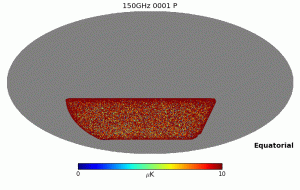 |
| 220 GHz | 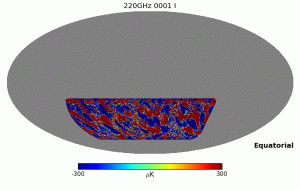 |
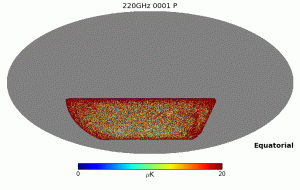 |
| 270 GHz | 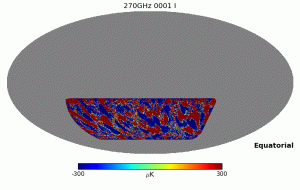 |
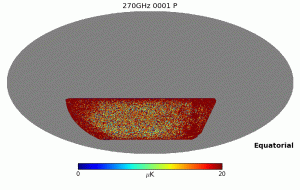 |
About Berkeley Lab
Founded in 1931 on the belief that the biggest scientific challenges are best addressed by teams, Lawrence Berkeley National Laboratory and its scientists have been recognized with 16 Nobel Prizes. Today, Berkeley Lab researchers develop sustainable energy and environmental solutions, create useful new materials, advance the frontiers of computing, and probe the mysteries of life, matter, and the universe. Scientists from around the world rely on the Lab’s facilities for their own discovery science. Berkeley Lab is a multiprogram national laboratory, managed by the University of California for the U.S. Department of Energy’s Office of Science.
DOE’s Office of Science is the single largest supporter of basic research in the physical sciences in the United States, and is working to address some of the most pressing challenges of our time. For more information, please visit energy.gov/science.









